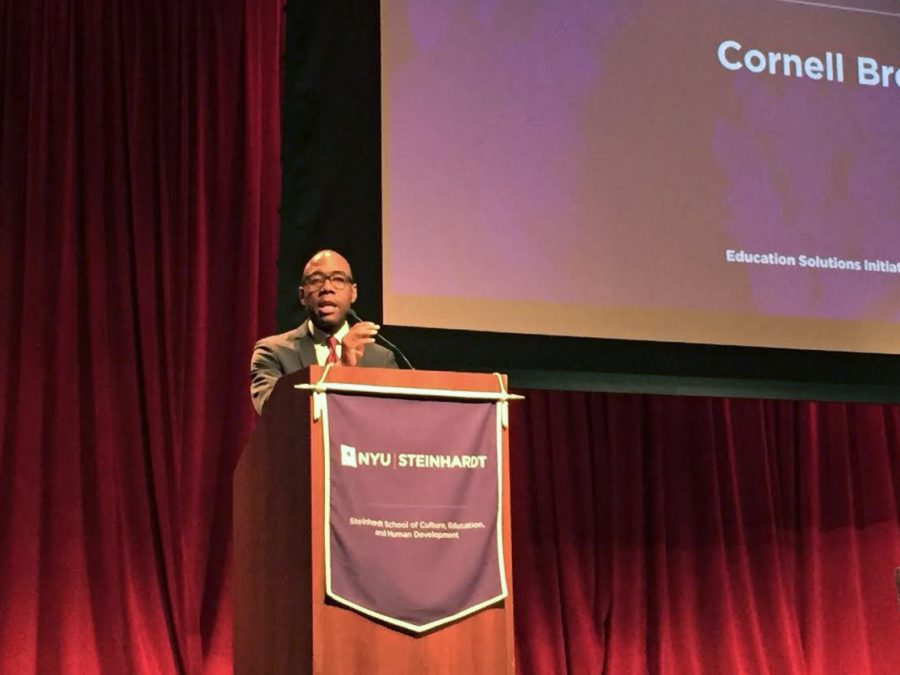NAACP President Discusses Student Roles in Civil Rights and Education
Cornell Brooks, President of NAACP, spoke about civil rights and education as a part of NYU Steinhardt’s Education Solutions Initiative.
October 20, 2016
Cornell Brooks, the President of the National Association for the Advancement of Colored People, came to NYU on Wednesday to speak about civil rights, education and leadership. He discussed the work that still needs to be done to achieve justice for people of color in the United States.
Brooks talked about how people of different generations and races must work together to achieve social justice and said that college students are at the forefront of sparking social change.
“If you look at the history of movements, students are frequently on the cutting edge,” Brooks said. “You will recall a few weeks ago, the elder statesman from Georgia by the name of John Lewis sat down in the well of the House and protested.”
Brooks said that during the March on Washington, Martin Luther King Jr. and Roy Wilkens — both NAACP members — had to keep Lewis in check for being too radical at his time. However, Brooks said that now, it is necessary for people to continue having that energy.
“We need that radicality,” Brooks said. “We need that edginess.”
Noel Scott Anderson, the director of educational leadership, thinks that NYU already has this trailblazing mentality, so having Brooks speak on campus strengthened this progressive mentality.
“There’s on one level, the kind of activism and awareness that was brought by students,” Anderson said. “There are student movements that are happening — from the dreamers to Black Lives Matter. These are all taking place in NYU’s campus and college campuses across the country.”
He said that even just a few months ago, the university had to assess how the campus would respond to the needs of students, such as with diversity, implementing a new administrative position and listening to the needs of students.
However, CAS junior Juan Canaval believes that while NYU, as an institution, has implemented diversity efforts better than other schools, there is still a long way for the school to go.
“The United States itself has a very messy, unwelcoming history when it comes to marginalized peoples,” Canaval said. “NYU has, in some ways, been very avant garde, like at the forefront of these issues. For example, NYU’s Islamic Center was one of the first to be established in the United States, but in other ways, it’s been behind in some capacity.”
Caraval also cited CMEP as an example, since it was only established in 1997. He said that there was originally just an office of African American Student Services, which excluded Latinos, Asians and other students of color.
Brooks said that students have the power to enact change within society, even outside of NYU. He said that the millennial generation put the name Michael Brown on Barack Obama’s radar, and without their advocacy and online prowess, this might never have received such attention.
“What I’m encouraged by is that students are not only focused on policy challenges, civil rights challenges at the national level — they’re also right off the campus, in the community,” Brooks said. “This is tough work. So you know, folks who are used to being sleep-deprived and doing their work, and treat it like a final exam. We need people there.”
Additional reporting by Miranda Levingston. Email Natasha Roy and Diamond Naga Siu at [email protected].


























































































































































